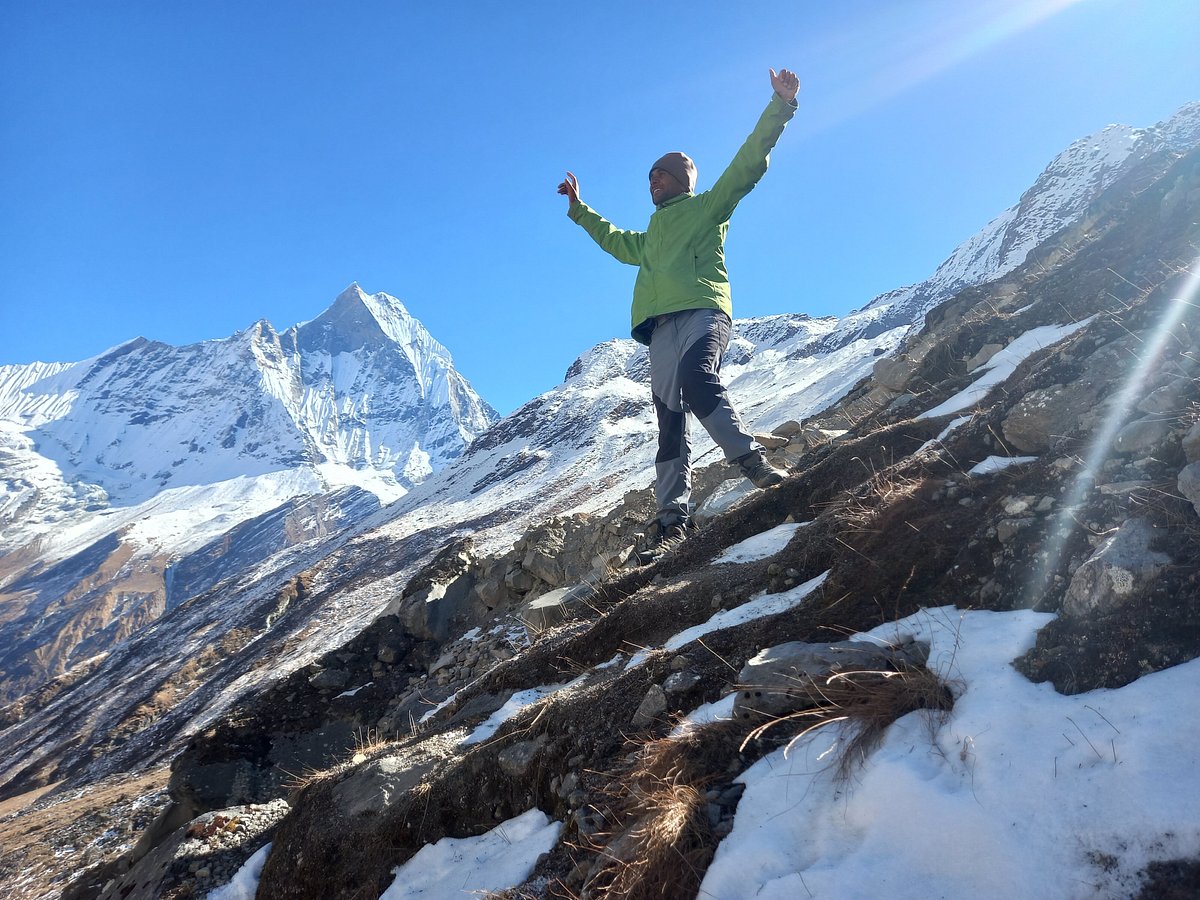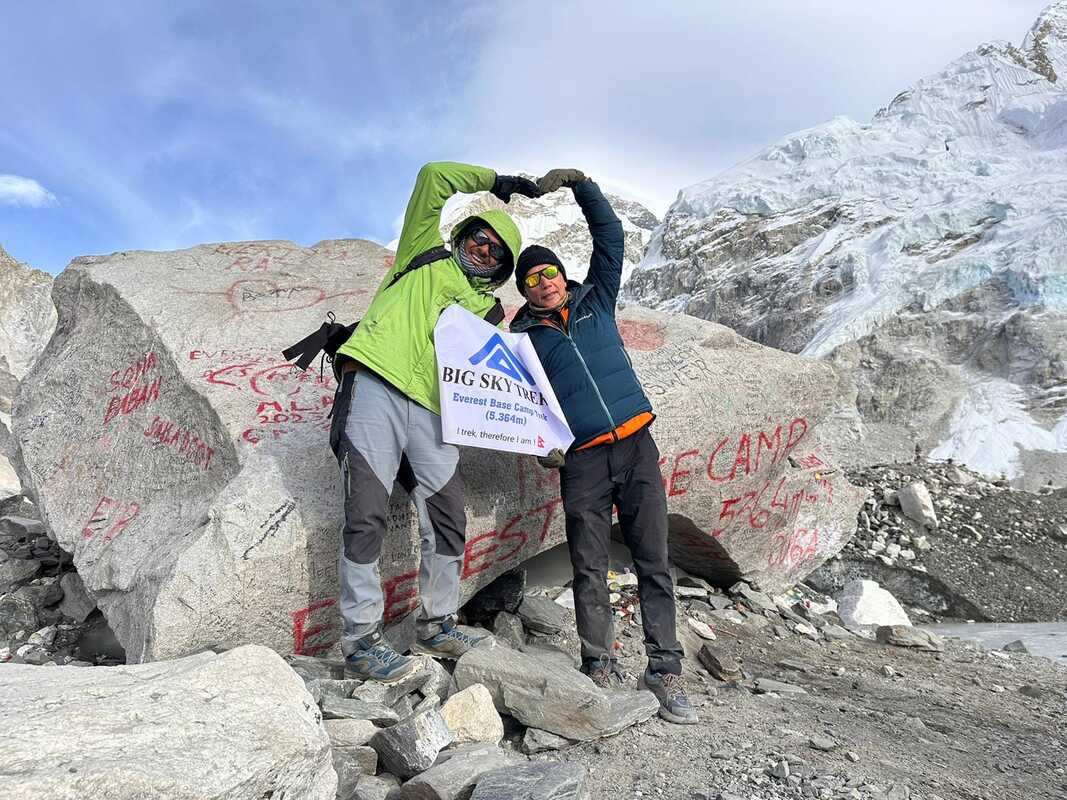Altitude sickness: Altitude sickness, or Acute Mountain Sickness (AMS), occurs when your body struggles to adapt to lower oxygen levels at higher elevations. It usually begins above 2,500 meters and can develop into more serious conditions like High Altitude Pulmonary Edema (HAPE) or High Altitude Cerebral Edema (HACE) if not treated.
Introduction to High Altitude Sickness
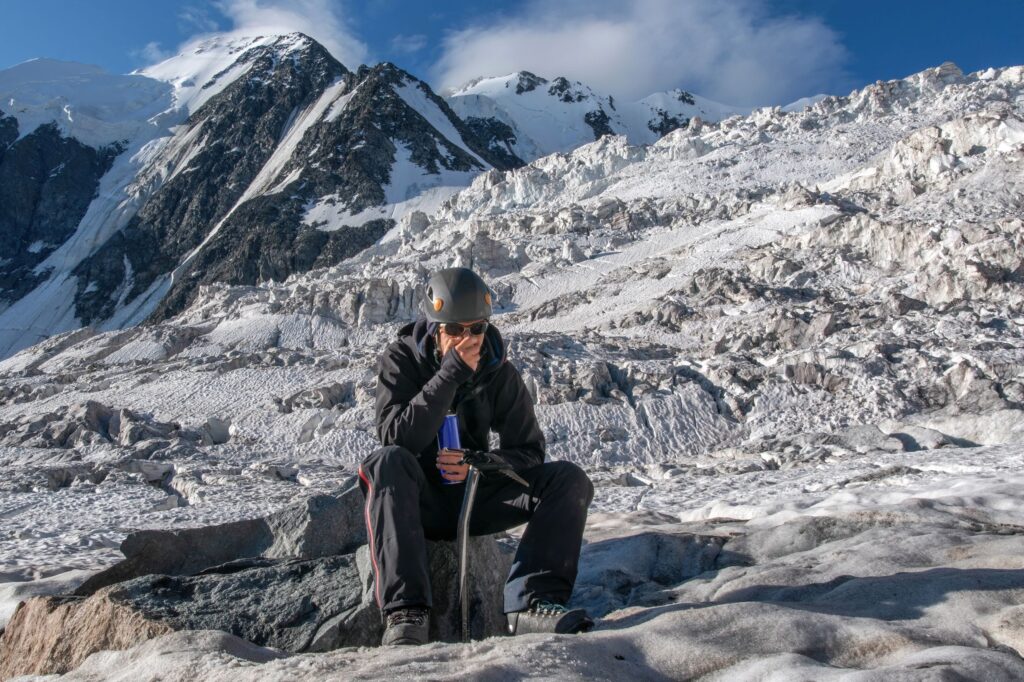
High altitude refers to areas above 2,500 meters (8,200 feet), where oxygen levels decrease, temperatures drop, and UV radiation intensifies. These elevations are common in mountainous regions such as the Himalayas, Andes, and Alps. In Nepal, trekking through the Himalayas offers unforgettable views and cultural encounters but demands proper acclimatization to avoid altitude sickness. Knowing how your body responds to high elevation is crucial for a safe adventure.
Causes of Altitude Sickness
- Rapid Ascent without acclimatization
- Low oxygen concentration
- Physical exertion too early at altitude
- Dehydration from dry air and rapid breathing
- Poor acclimatization strategy
- Genetic predisposition
- Cold weather affecting circulation
- Alcohol and smoking
- Sleeping at higher elevations
- Inadequate nutrition
Common Symptoms of Altitude Sickness
- Headache: Most common initial symptom
- Nausea and vomiting: Due to slowed digestion
- Dizziness: From low oxygen to the brain
- Fatigue: Lack of energy from reduced oxygen
- Shortness of breath: Faster, shallow breathing
- Loss of appetite and dehydration
- Insomnia: Poor sleep due to disturbed breathing
- Mild swelling (edema)
- Rapid heartbeat
Treatment of Altitude Sickness
- Stop climbing and rest
- Descend if symptoms worsen
- Stay hydrated
- Use medications like Acetazolamide
- Oxygen therapy in severe cases
- Avoid alcohol/smoking
- Seek medical help for severe symptoms
Prevention of Altitude Sickness
- Ascend slowly
- Allow rest and acclimatization days
- Stay hydrated and well-nourished
- Limit physical activity at high altitudes
- Avoid alcohol and smoking
- Sleep lower than highest elevation reached
- Consider preventive medication
- Listen to your body
- Travel with experienced guides
High Altitude Cerebral Edema (HACE)
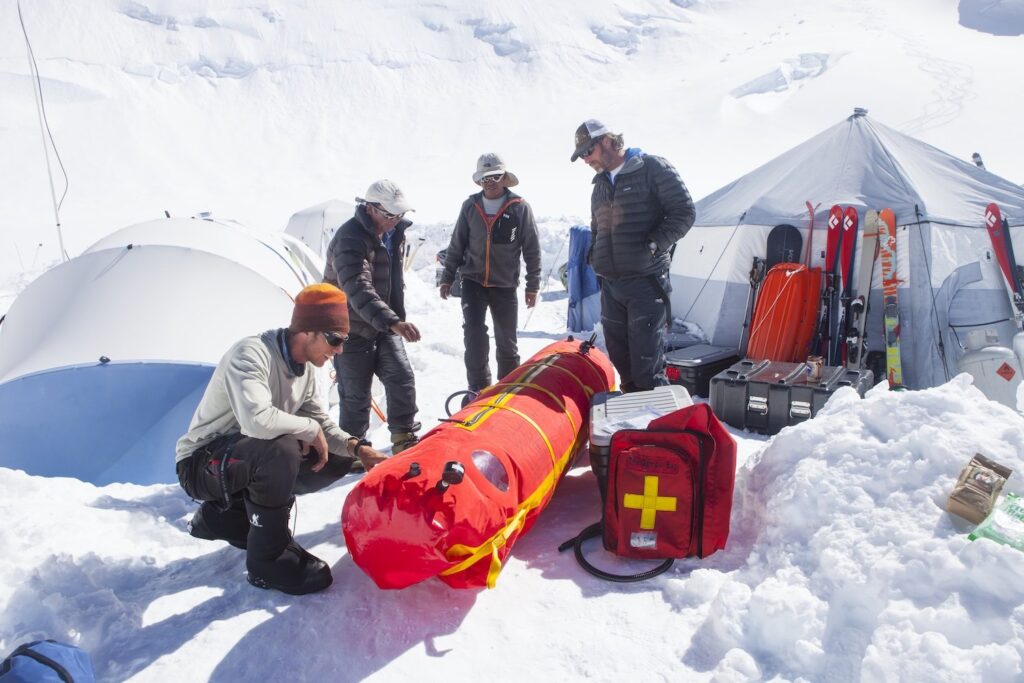
High Altitude Cerebral Edema (HACE) is a life-threatening condition caused by brain swelling due to low oxygen at elevations typically above 4,000 meters. It is a severe form of altitude sickness that develops from untreated Acute Mountain Sickness (AMS). Common symptoms of HACE include confusion, loss of coordination, severe headache, and difficulty walking. Without immediate descent and oxygen treatment, HACE can lead to coma or death. Preventing HACE involves slow ascent, proper acclimatization, and early recognition of AMS symptoms. If you’re trekking in Nepal’s Himalayas, knowing about HACE is crucial for high-altitude safety and mountain health awareness.
HACE is a dangerous condition where the brain swells due to low oxygen.
Causes:
- Rapid ascent without acclimatization
- Severe AMS left untreated
- Excessive physical exertion
- Cold and low oxygen environments
Symptoms:
- Severe headache
- Confusion or disorientation
- Difficulty walking or standing (ataxia)
- Vomiting
- Extreme fatigue
- Blurred vision
- Coma in extreme cases
Treatment:
- Immediate descent
- Oxygen supply
- Dexamethasone to reduce swelling
- Rest and complete inactivity
- Emergency evacuation if needed
Prevention:
- Slow ascent with acclimatization
- Recognize and treat AMS early
- Avoid overexertion
- Stay hydrated and nourished
- Use preventive medication as advised
- Travel with trained guides
High Altitude Pulmonary Edema (HAPE)
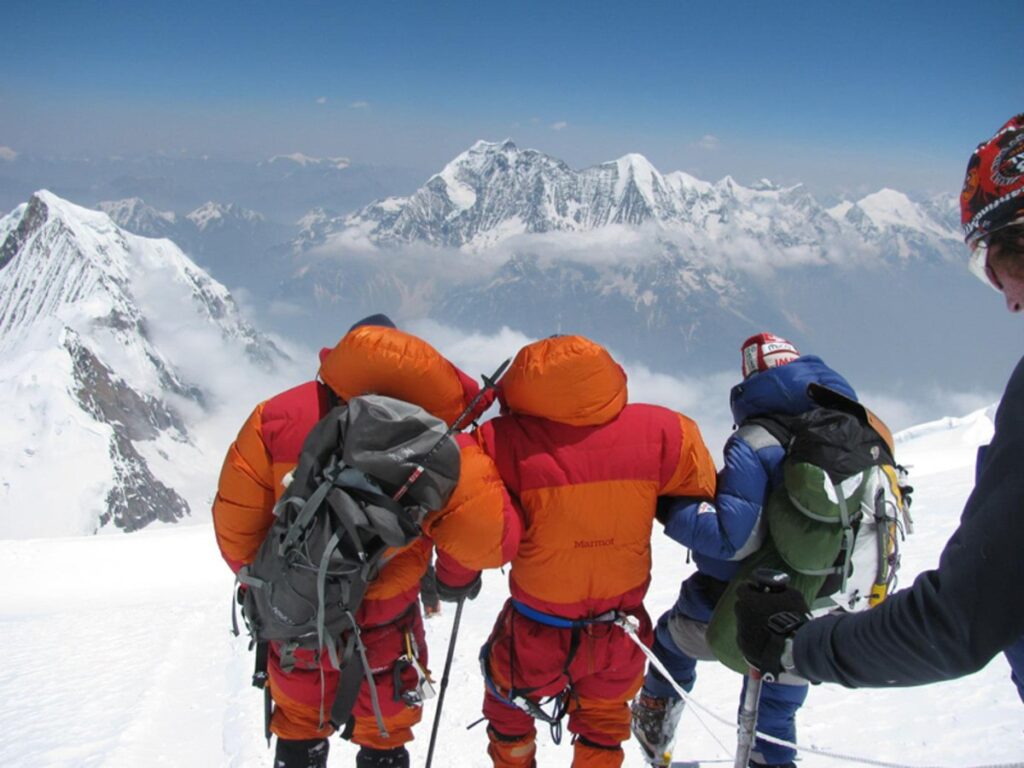
High Altitude Pulmonary Edema (HAPE) is a life-threatening condition that occurs at high elevations, typically above 3,000 meters, due to fluid buildup in the lungs caused by low oxygen levels. Common symptoms include severe shortness of breath, chest tightness, persistent cough (sometimes with frothy or pink sputum), and extreme fatigue. If untreated, HAPE can rapidly become fatal. Immediate descent, supplemental oxygen, and medication like nifedipine are essential for recovery. Trekkers in Nepal’s high-altitude regions—such as Everest, Annapurna, and Manaslu—must acclimatize properly and recognize early symptoms. Stay safe with experienced guides.
HAPE is fluid accumulation in the lungs at high altitude.
Causes:
- Rapid ascent
- Hypoxic pulmonary vasoconstriction
- Increased lung pressure
- Strenuous activity
- Cold temperatures and dehydration
Symptoms:
- Severe breathlessness even at rest
- Persistent cough with frothy/pink sputum
- Chest tightness
- Fatigue and weakness
- Fast heart rate and breathing
- Bluish lips/fingertips
- Confusion or unconsciousness
Treatment:
- Immediate descent
- Supplemental oxygen
- Complete rest
- Nifedipine and related medications
- Hyperbaric chamber if descent delayed
- Emergency medical care
Prevention:
- Ascend gradually
- Avoid heavy exercise early
- Stay hydrated
- Use preventive medication if at risk
- Recognize symptoms early and act fast
Comparison of AMS, HAPE, and HACE
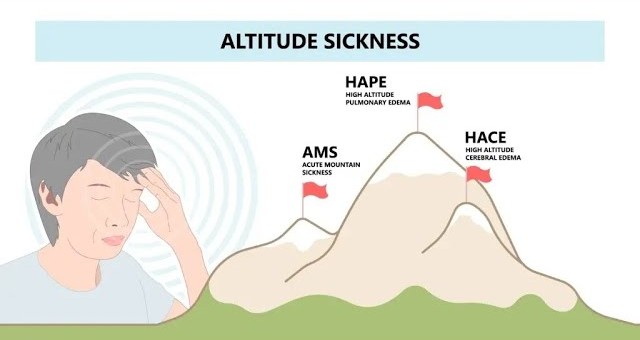
| Comparison of Altitude Sickness (AMS), HAPE, and HACE | |||
| Aspect | Altitude Sickness (AMS) | High Altitude Pulmonary Edema (HAPE) | High Altitude Cerebral Edema (HACE) |
| Definition | Mildest form of altitude illness caused by low oxygen at high altitudes. | Fluid buildup in lungs due to high pressure in lung vessels at altitude. | Swelling of the brain caused by fluid leakage due to low oxygen. |
| Cause | Rapid ascent and low oxygen affecting body adaptation. | Pulmonary blood vessel constriction and leakage caused by hypoxia. | Brain swelling from increased blood flow and fluid leakage. |
| Symptoms | Headache, nausea, dizziness, fatigue, loss of appetite, difficulty sleeping. | Severe breathlessness at rest, cough with frothy sputum, chest tightness, fatigue. | Severe headache, confusion, loss of coordination, drowsiness, hallucinations. |
| Severity | Mild to moderate, usually resolves with rest and acclimatization. | Serious, can be life-threatening without immediate treatment. | Most severe form, life-threatening emergency. |
| Treatment | Rest, slow ascent, hydration, painkillers. | Immediate descent, oxygen therapy, medications, rest. | Immediate descent, oxygen, steroids, emergency medical care. |
| Prevention | Gradual ascent, hydration, avoid alcohol and smoking. | Same as AMS plus avoid strenuous activity early on, medications if prone. | Same as HAPE with added use of steroids if at risk. |
| Onset Time | Within hours to a day after ascent. | Usually 2-5 days after rapid ascent. | Usually after untreated AMS or HAPE, rapid onset. |
| Affected Organ | Whole body with mild brain involvement. | Lungs | Brain |
High Altitude Sickness in Nepal’s Trekking Regions
Everest Region
- AMS risk above Namche, Dingboche, Lobuche
- High-risk zones: EBC, Gokyo Ri, Cho La Pass
- Take rest days at Namche, Dingboche
Annapurna Region
- Risk at Thorong La Pass, Tilicho Lake
- Acclimatize in Manang, rest before pass
- ABC carries moderate AMS risk, ascend slowly
Langtang Region
- Tserko Ri and Gosainkunda pose risks
- Kyanjin Gompa is good for acclimatization
Manaslu Region
- Larke La Pass is high-risk
- Samagaon and Mu Gompa useful for acclimatization
Dolpo Region
- Treks stay above 3,500m for long durations
- Very remote with limited rescue options
- Slow ascent and experienced guides are essential
Acute Mountain Sickness (AMS) and Trekking in Nepal
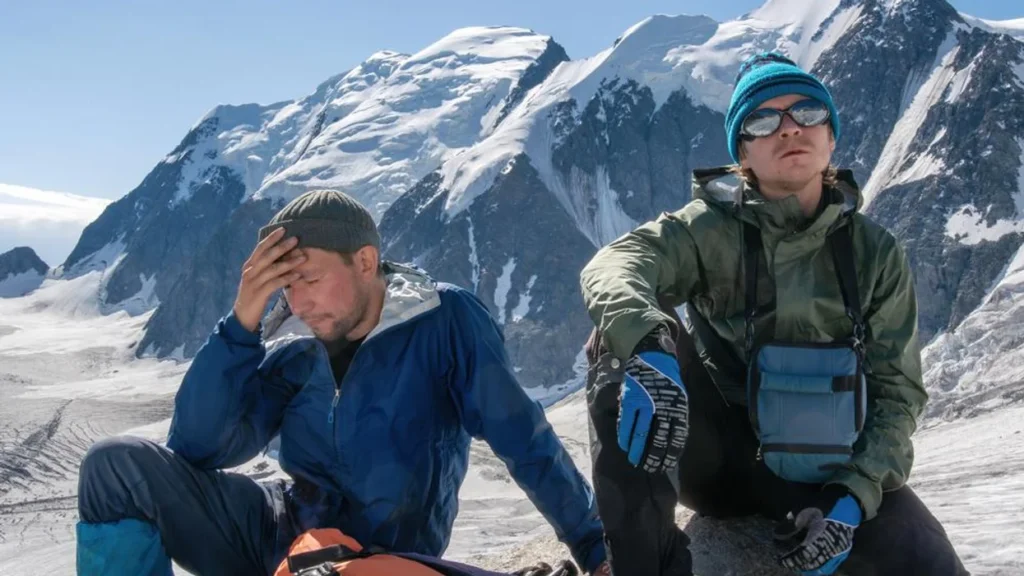
Acute Mountain Sickness (AMS) is a common risk when trekking at high altitudes in Nepal’s Himalayas. Symptoms like headache, nausea, and fatigue can affect even experienced trekkers. Traveling with a reputable trekking agency like Big Sky Treks Nepal ensures proper acclimatization planning, experienced guides, and emergency support. Our guides monitor your health closely and adjust itineraries to minimize AMS risks. With reliable assistance, oxygen availability, and safe descent options, you can enjoy Nepal’s stunning landscapes worry-free. Choose Big Sky Treks Nepal for a safe, well-supported trekking experience in the majestic Himalayas.
- Carefully designed itineraries for acclimatization
- Trained guides who monitor AMS symptoms
- Emergency plans and oxygen support
- Cultural guidance and mountain safety
- Local knowledge on rescue services, weather, and terrain
Additional Tips for Trekking Safely at High Altitude:
- Check weather forecasts regularly
- Pack layered clothing for changing weather
- Always carry extra snacks and energy bars
- Inform someone of your trekking route and schedule
- Bring a pulse oximeter to monitor oxygen levels
- Learn basic first aid and AMS response
Recommended Equipment for High Altitude Treks to Prevent AMS, HACE, and HAPE
- Warm Clothing: Layered thermal wear, insulated jackets, gloves, and hats to protect against cold temperatures.
- Good Quality Hiking Boots: Waterproof, insulated boots with strong ankle support to handle rugged terrain.
- Trekking Poles: Help reduce strain on knees and improve stability on uneven paths.
- Sleeping Bag: Rated for sub-zero temperatures to ensure warmth during cold nights.
- Portable Oxygen Cylinder: Useful for emergencies or if symptoms of altitude sickness develop.
- Acetazolamide (Diamox): Medication to aid acclimatization (use only with doctor’s advice).
- Water Bottle & Water Purifier: Stay hydrated with clean water to prevent dehydration.
- Sunglasses and Sunscreen: Protect eyes and skin from strong UV radiation at altitude.
- Headlamp or Torch: For visibility during early starts or night walks.
- First Aid Kit: Includes painkillers, anti-nausea medicine, blister treatment, and basic supplies.
Using the right equipment helps your body adjust and reduces risks of AMS, HACE, and HAPE.
Conclusion High altitude trekking in Nepal is incredibly rewarding but requires proper planning. By understanding the risks of AMS, HAPE, and HACE, and traveling with experienced guides, you can enjoy the beauty of the Himalayas safely.
Doctor Advice for AMS, HACE, and HAPE Before Traveling to Nepal
Before embarking on a high-altitude trek in Nepal, it is essential to consult your family doctor for a thorough health check-up. Acute Mountain Sickness (AMS), High Altitude Cerebral Edema (HACE), and High-Altitude Pulmonary Edema (HAPE) are serious altitude-related illnesses that require awareness and prevention. Your doctor can assess your overall health and advise if you have pre-existing conditions such as asthma, heart problems, diabetes, high blood pressure, sleep disorders, or muscle pain that might affect your ability to trek safely.
Discussing your medical history with your doctor helps ensure you receive personalized recommendations, including possible preventive medications like acetazolamide (Diamox). They can also guide you on managing chronic conditions during your trek and provide advice on medications to carry. Proper preparation reduces health risks and improves your trekking experience at high altitudes.
Remember, health is wealth—taking these precautions seriously helps you enjoy Nepal’s breathtaking mountains safely and comfortably. Consult your family doctor well before your trip, so you’re fully prepared for the adventure ahead.
What Happens to Your Body at High Altitude?
When you ascend to high altitude—typically above 2,500 meters (8,200 feet)—your body faces a significant drop in available oxygen due to lower air pressure. This leads to a series of physiological changes as your body tries to adapt to the thinner air:
- Reduced Oxygen Intake: The partial pressure of oxygen decreases, so each breath delivers less oxygen to your lungs and bloodstream.
- Increased Breathing Rate: To compensate, your breathing becomes faster and deeper (hyperventilation) to bring in more oxygen.
- Elevated Heart Rate: Your heart pumps faster to circulate oxygen-rich blood more efficiently to tissues.
- Fluid Shifts: Blood vessels may leak fluid into tissues, causing swelling or mild edema in hands, feet, and face.
- Increased Red Blood Cell Production: Over days to weeks, your body produces more red blood cells to carry oxygen more effectively.
- Metabolic Changes: Appetite may decrease, and digestion slows, impacting energy intake.
- Sleep Disturbances: Changes in breathing patterns can cause difficulty sleeping or restless nights.
Without proper acclimatization, these changes can lead to altitude sickness symptoms like headache, nausea, dizziness, and fatigue. Understanding how your body reacts is essential for safe trekking in Nepal’s high mountains. for a day filled with awe. Lace up your shoes, breathe in the crisp air, and let your morning walk in Pokhara reveal the heart of this Himalayan paradise. let Pokhara’s beauty set the tone for your day.
Faq’s
What is Acute Mountain Sickness (AMS) and how does it affect trekkers in Nepal?
AMS occurs when your body struggles to adapt to lower oxygen levels above 2,500 meters. Symptoms include headache, nausea, dizziness, and fatigue. Without proper acclimatization, AMS can worsen and lead to life-threatening conditions like HAPE or HACE.
What are HAPE and HACE, and why are they dangerous?
HAPE (High Altitude Pulmonary Edema) is fluid buildup in the lungs causing severe breathlessness and cough. HACE (High Altitude Cerebral Edema) is brain swelling causing confusion and loss of coordination. Both are emergencies needing immediate descent and medical treatment.
What causes altitude sickness during trekking?
Rapid ascent without rest, dehydration, physical exertion too soon at altitude, cold weather, smoking, alcohol, and poor nutrition increase risk. Genetic factors and sleeping too high also contribute.
How can I prevent altitude sickness on a Nepal trek?
Ascend slowly with rest days, stay hydrated and nourished, avoid alcohol and smoking, limit strenuous activity early, sleep lower than highest reached, and consider doctor-prescribed preventive medication like acetazolamide.
What should I do if I experience symptoms of AMS, HAPE, or HACE?
Stop climbing, rest, hydrate, and inform your guide. If symptoms worsen (severe breathlessness, confusion), descend immediately and seek emergency care with oxygen therapy if available.
Contact us
Contact US
Location: Big Sky Treks, Nepal
Email:bigskytreks@gmail.com
Phone: Call Us

